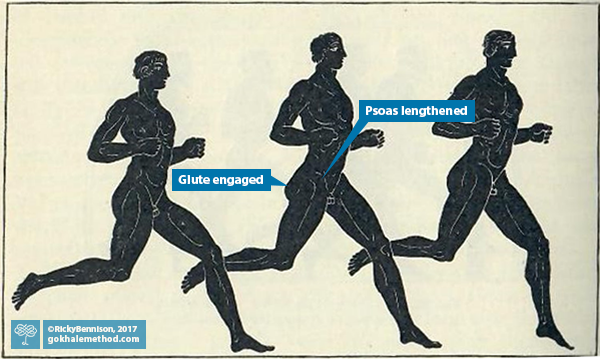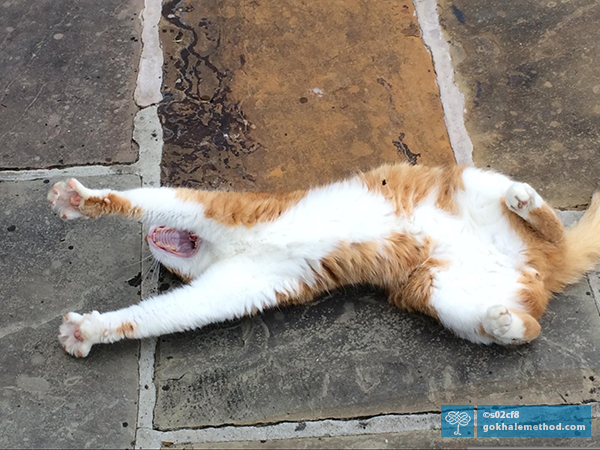A Brief History of Stretching—and Why Healthy Posture is Key
If you have been in a field for several decades, you end up taking a long view of trends and guidelines. You see how fashions change. Some things go, some things come back around, and new ideas are the best thing until the next new idea. This cycle of innovation and rediscovery is a hallmark of our society.
I find this is certainly true of stretching guidelines, which have perhaps gone through more changes than any other fitness practice. You are likely familiar with at least some of this history and used some of these stretching approaches yourself:
In the mid-twentieth century, athletes and dancers favored ballistic stretching: bouncing or pulsing into a stretch to push the limits of range. While well-intentioned, these sharp movements often provoked the body’s stretch reflex, causing muscles to tighten defensively. The body was treated as something to be forced rather than listened to.
By the 1960s and ’70s, the focus shifted toward static and passive stretching—holding a pose for 20 to 60 seconds, often with gravity’s help, became the gold standard. Especially in yoga classes, this era brought greater awareness of calm, incremental stretch. Stretch was often accompanied by a slow exhalation, favoring the parasympathetic nervous system and relaxation.
In the 1980s and ’90s, research showed that static stretching before activity could reduce muscle responsiveness, leading to a preference for active and dynamic stretching. So, using movement returned, this time with muscles lengthening through the engagement of their opposing muscles. One example is how in glidewalking (as taught in the Gokhale Method), ensuring contraction of the gluteal muscles in the leg straightening backward encourages a natural lengthening of the psoas muscle.

The engagement of the glutes pulling the leg back in running and healthy walking encourages the psoas to lengthen.
Around the same time, rehabilitation researchers discovered what was termed Proprioceptive Neuromuscular Facilitation (PNF). By alternating contraction and then greater release, PNF used the nervous system’s intelligence to restore and develop range of motion. It recognized something essential: flexibility is not just mechanical—it’s neurological, and the stretch reflex, which inhibits stretch, can be dialed down.
In the twenty-first century, our knowledge of stretching has both expanded (no pun intended!) and deepened. Principles of functional mobility and somatic awareness seek to integrate flexibility with stability. Instead of treating the body as an assembly of parts, these approaches view it as a coordinated whole. The goal is not to lengthen muscles in isolation but to restore the body’s alignment, built-in springiness, and poised tension. Understanding the role of fascia, and the concept of biotensegrity, which you can read about in this blog post, have been key.
The rediscovery of pandiculation is a welcome and joyous recent development. This is that instinctive, whole-body stretch and yawn we do naturally when we wake up, or whenever we want to release tension and revitalize. When you pandiculate you gently contract your muscles and tissues and then release the tension under conscious control, recalibrating the nervous system and restoring balanced tone. Rolling around on your exercise mat is the perfect place to explore this—and it’s delicious! Once you get going it can be hard to stop as you peel off layers of tension.

For cats, dogs, humans and other mammals, yawning and stretching is a natural and healthy activity.
Ready to explore a new paradigm of flexibility?
Our students discover that their tight muscles can gradually let go from having to hold on, trying to do the jobs that other muscles have forgotten how to do, and that poor posture forces them to do. As their posture journey progresses, and their neglected musculature gets stronger, students find they no longer need to repeatedly “stretch out” excessively tight muscles that feel just as bad the next day.

Poor stretching technique overstretches spinal ligaments and leaves other areas compressed.
The in-person Gokhale® Foundations or online Gokhale® Elements course teaches you how to harness effortless stretch and gentle traction as your sit, rest, and sleep. Using stretchsitting and stretchlying, you can restore natural length and space to release tight spinal curves.
With Gokhale® Active, our online daily program, you can regularly experience the best healthy stretches as part of your exercise regimen—and always with healthy posture as a baseline.
Rather than suffer a daily struggle with pain and tight muscles, let the Gokhale Method guide you back to your body’s innate posture wisdom and natural flexibility.
Best next action steps
You can sign up below to join any one of our upcoming FREE Online Workshops…

Comments
My relationship to…
My relationship to stretching has really changed over the years since I was a dancer. At 74, I am more flexible than I was at 24, and I think that is due to not over-stretching. Posture awareness and relaxation made a huge difference. Thank you for this post, Esther.
Wow - kudos that you are…
Wow - kudos that you are more flexible at 74 than at 24!
I was aware of most of the…
I was aware of most of the pieces mentioned, but this post puts them in well-rounded perspective.
Another piece to my body awareness and recovery journey
Thank you, Esther
You are so welcome! We all…
You are so welcome! We all need to keep growing, kinesthetically and intellectually - so glad to hear from a fellow journeyman.
Add New Comment
Login to add commment
Login